There are times when you feel so alone and helpless that you want to hide yourself in a cocoon. You think so hollowly from within that it starts sucking you into the hole of depression.
Can yoga treat depression?
Mental wellbeing is much superior to physical wellbeing, and yet it is not taken as seriously as it should. Don’t let depression take over your mental peace; you’re stronger than you think.
So the question is, “Where does Yoga come into depression?” Yoga, an ancient practice, is proven to be therapeutic for relieving depression. The poses help increase blood circulation to the brain, which reduces stress, relaxes muscles, and produces mood-elevating hormones.
According to Harvard Health Publishing, yoga cures depression by treating its symptoms. They state that “the scientific study of yoga demonstrates that mental and physical health are not just closely allied, but are essentially equivalent.”
Best Yoga Poses to Cure Depression
Yoga is proven to increase your HRV (Heart Rate Variability), which is known to reduce a person’s stress response in the body and increase its relaxation response. The combination of physical and mental exercise in yoga helps in creating a balance between the mind and body, which helps you find your inner peace. Here are Eight Yoga poses to cure depression naturally.
1. Adho Mukha Svanasana (Downward-Facing Dog Pose)
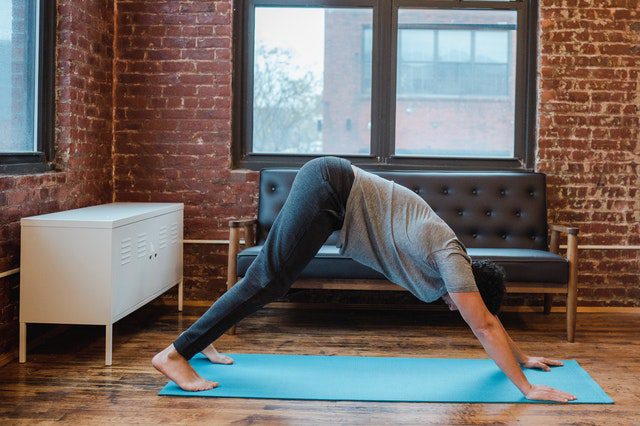
How to do it?
Stand straight and bend down to make a table posture with your upper body. Your hands and legs should look like the legs of the table. Now slowly move your upper body upwards with the help of your hips and elbow into an ‘inverted V shape.’ Make sure that your toes are pointing straight, and your ears can touch your arms. Your hands should hold down to the ground firmly.
Benefits: The Adho Mukha Svanasana pose stretches the stressed parts of your body and releases tension, which helps in reducing anxiety. It is also known to improve digestion and strengthen your core.
2. Bhujangasana (Cobra Pose)

How to do it?
For this pose, lie down on your stomach. Now slowly stretch your legs, making sure that your toes are pointed. Slowly lift your upper body with your hand in a position that your elbows and shoulders are parallel to each other. Tilt your upper body as much as you can and look upwards. Make sure that your chest is in an outward position. Breathe heavily while holding the pose.
Benefits: This pose strengthens your abdomen and reduces fatigue caused by depression.
3. Halasana (Plough Pose)
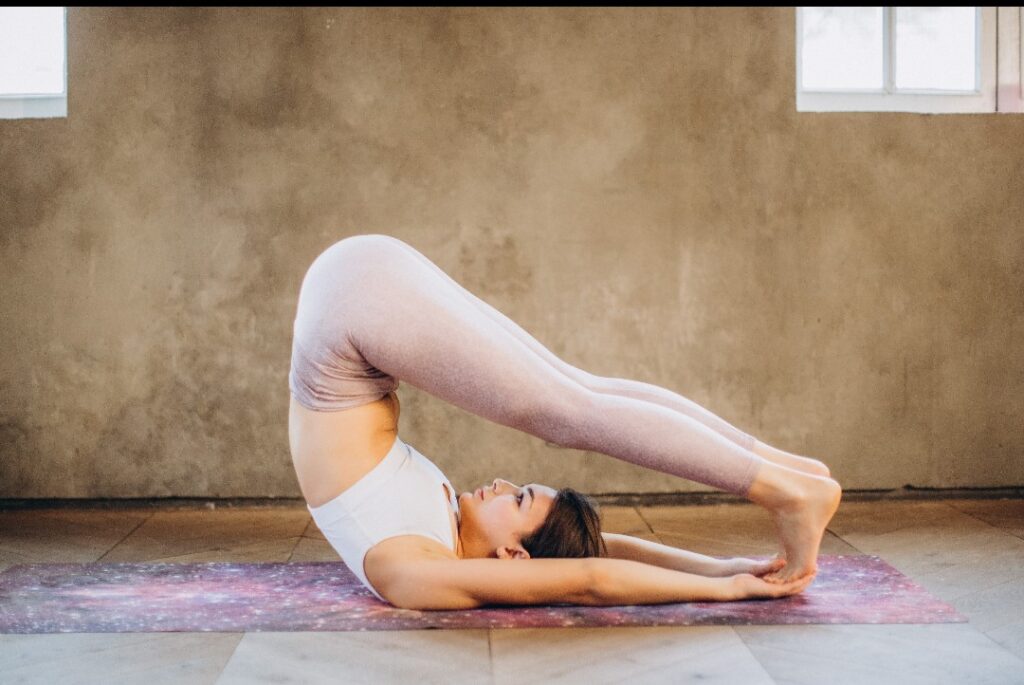
How to do it?
Lie flat on your back in a corpse position. Now slowly lift your legs to a 90-degree angle by using your hands on your hips for support. Slowly angle your hips towards your chest with the help of your hands. Now bring down your legs over your head till your toes touch the ground. Make sure that your legs are straight and are not touching your head. Once you feel that you are able to maintain the position, remove your hands from your hips, and live them flat on the ground with your palms facing forward.
Benefits: This pose stretches your spine and helps in reducing stress. It also helps in calming your nerves and the brain.
Related: How Meditation and Yoga Beat Stress
4. Balasana (Child Pose)
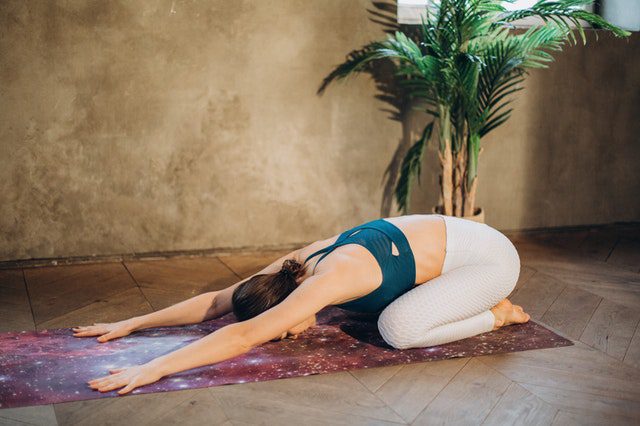
How to do it?
Sit on your heels in a kneeling position with your big toes touching each other. Now slowly part your knees and bend forward till your head is touching the floor. Stretch your arms above your head. Take deep breaths while you hold that pose. This is an easy yet effective pose for people who are beginners at yoga.
Benefits: The Balasana pose helps in both physical and mental relaxation. It stretches the body and relaxes your muscles. It calms the brain, which helps in reducing stress and anxiety caused by day-to-day pressure.
Related: Why Is Yoga Beneficial For Mental Health
5. Sethu Bandhasana (Bridge Pose)
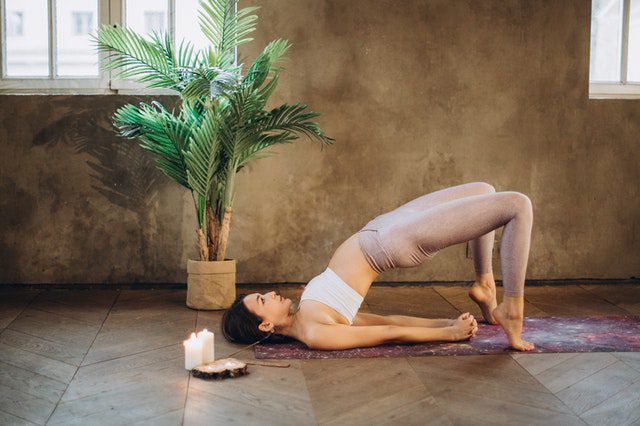
How to do it?
In order to do this pose, lie flat on your back, keeping your arms straight and parallel to each other. Now face your palms downwards. Gently fold your legs at your knees and lift them up. Your knees and ankles should be in line with each other. Make sure that your feet are a few inches apart. With the strength of your hands, lift your back till your chest touches your chin. Don’t bend your head, or else it will cause a sprain in your neck. Hold that pose for a few seconds and then release.
Related: 7 Ways Yoga Improves Your Body Posture
Benefits: The Bridge Pose stretches your chest, making it feel lighter and more relaxed. The muscles of your back feel stretched and help in your posture too.
6. Virabhadrasana (Warrior Pose)

How to do it?
For this pose, stand straight on the mat with your hands parallel to each other. Now take your left foot forward and your right foot backward. Bend your left foot and make sure that your right leg is stretching backward in a straight manner. Now raise both your arms above your head. Hold the pose while breathing heavily. Now repeat the pose with your right leg forward.
Benefits: This pose aims at bringing out your inner warrior. It strengthens your abdomen and your legs. The muscle stretch helps in reducing stress and anxiety that are some main causes of depression.
7. Savasana (Corpse Pose)

How to do it?
The famous corpse pose is practiced at the end of yoga sessions. For this pose, you need to lie flat on your back. Place your arms freely away from your body with your palms facing upwards. Now keep your feet a few inches apart with your toes facing upwards. Close your eyes and let your body relax and take away all the fatigue. You may take deep breaths for a more relaxing experience.
Benefits: The Corpse Pose reduces blood pressure and helps in relaxing your muscles after a strenuous workout. It rejuvenates your inner self by relaxing both your mind and body.
Related: Benefits of Meditation & Yoga After Long Screen Hours
8. Uttanasana (Standing Forward Fold Pose)
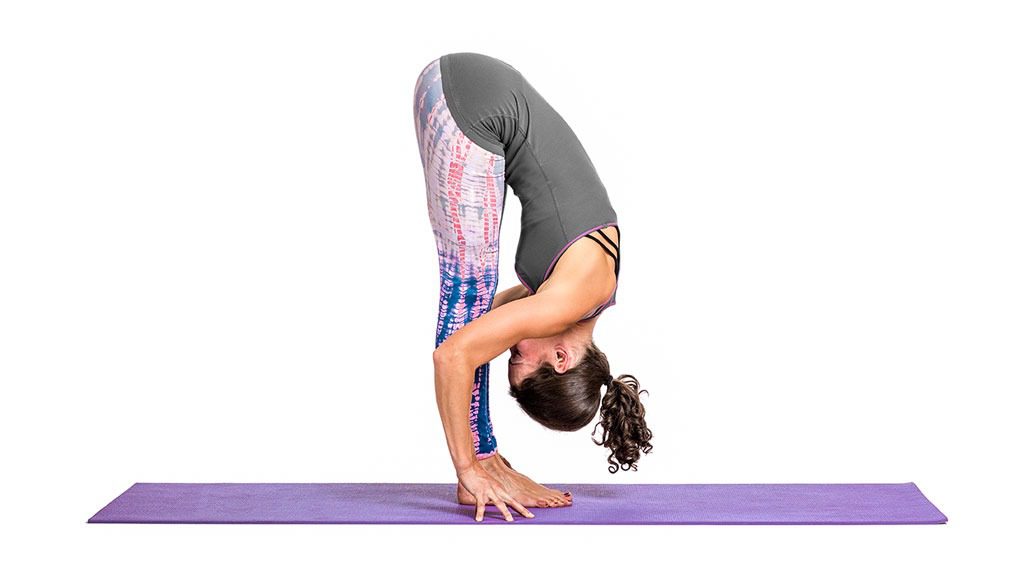
How to do it?
In order to do this pose, stand straight on the mat with your hands placed on the side of your body. Now put your hands on your hips and bend downwards till your chest touches your thighs. Take your hands off your hips and make them touch your feet or hold your ankles. Make sure that your thighs are straight and your back doesn’t slouch.
Benefits: The Standing Forward Fold Pose helps enhance your blood circulation and improves the blood flow to the brain. It also releases tension in your neck and back which helps in reducing stress.
These poses will help you keep depression at bay. To perform these poses, you don’t need to join an expensive class or a studio. Just practicing on a yoga mat will do. Add these poses to your everyday routine and continue them for at least 10-12 weeks. Whether you’re suffering from emotional, mental, or physical trauma, yoga will heal your wounds and transform you into a new person.


